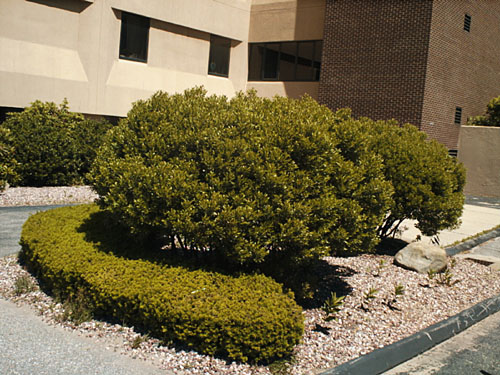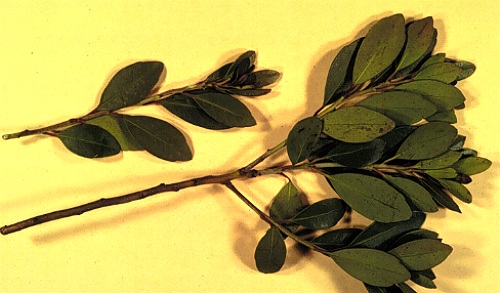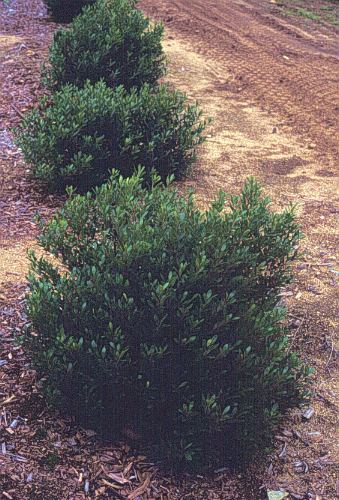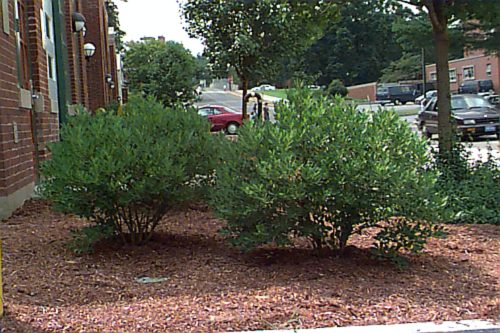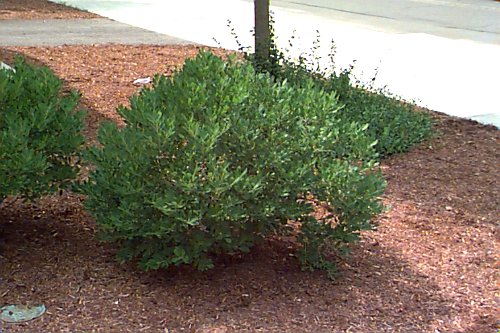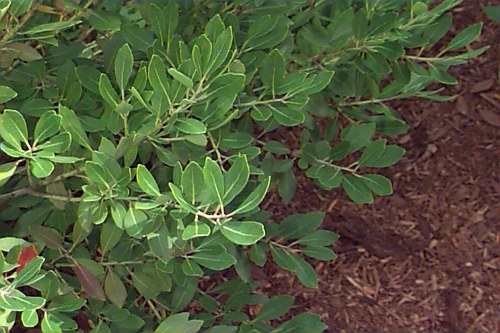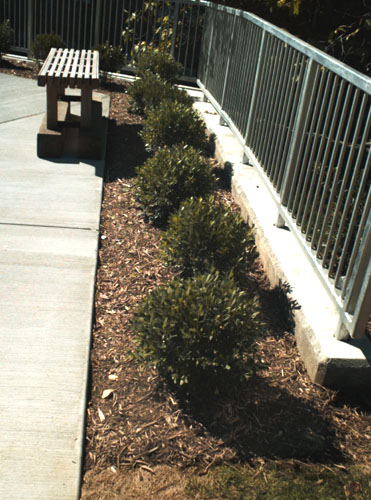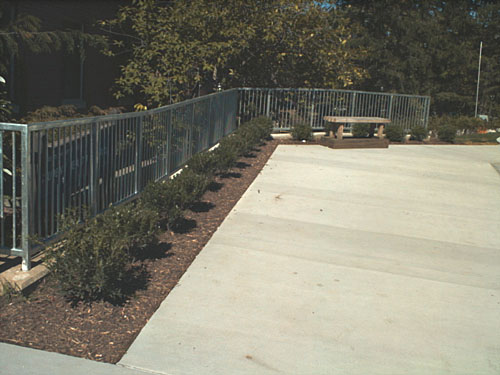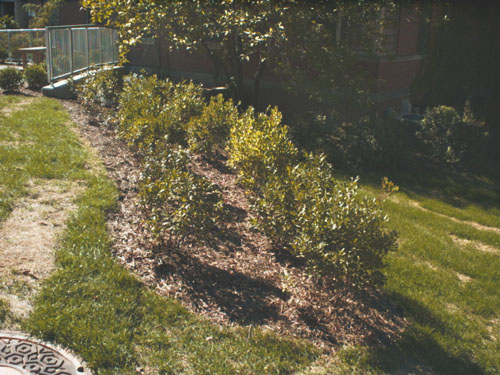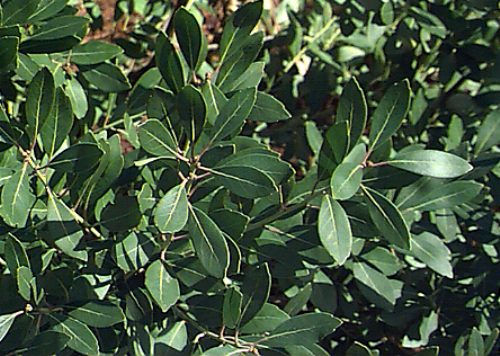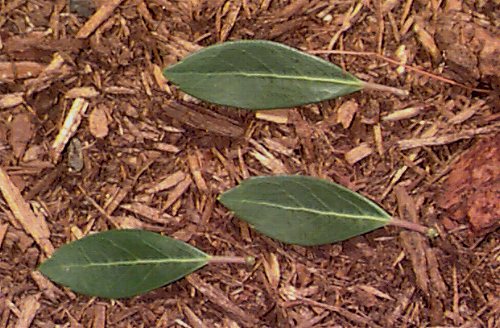Ilex glabra
Inkberry
Aquifoliaceae
ExpandHabitat
- native to eastern and south central United States
- zone 5
- typically found in large suckering colonies in swamps and wet areas
Habit and Form
- 4' to 8' tall
- upright spreading habit with rounded head
- on older plants, the foliage is only on the upper half of the plant, making them somewhat leggy.
- young plants are dense and compact
- an evergreen shrub
- tends to form suckering colonies
Summer Foliage
- leaves mostly 1" to 2" long and 0.33" to 0.5" wide
- broadest above the middle
- usually with 2 notches in the leaf margins on each side of the apex creating a few teeth
- leaves evergreen
- leaves lustrous dark green
- alternate leaf arrangement
Autumn Foliage
- evergreen
- leaves can develop a purple-plum cast in winter. This is dependant on cultivars and exposure
Flowers
- dioecious, with male and female plants
- blooms in June
- male flowers in clusters and female flowers solitary
- flowers a small and dull white
- not ornamentally important
Fruit
- small black fruits born in September
- the 0.25" diameter fruits are held well into the next spring
- not especially showy, but probably display better than I. crenata
- white-fruited cultivars can be showy in fruit
Bark
- smooth
- gray-brown or slightly greenish
- newer stems generally quite green
Culture
- prefers adequate soil moisture and acidic pH
- full sun or partial shade is best
- relatively tolerant of salt
- tolerates periodic rejuvenation pruning to lower the height
- protect from harsh winter exposure
Landscape Use
- borders
- foundation plantings
- mass plantings
- wet locations
- possibly for seaside plantings
Liabilities
- needs ample soil moisture
- leaf spot disease
- tends to be pen and leggy at the base
- may need some pruning to maintain fullness
- foliar burn in exposed locations
- performs poorly on high pH soils
ID Features
- alternate leaves
- only a few teeth at the leaf apex
- upright growth with leggy, open base
- colonizing or suckering habit
- small black fruit
Propagation
- cultivars by semi-hardwood or winter cuttings
- seeds exhibit a deep dormancy and are slow to germinate
Cultivars/Varieties
'Compacta' - A common, popular clone that has denser branching and foliage than the species. It is a female form with black fruit and becomes an oval-rounded plant 6' tall and wide (though larger plants are known). It can become somewhat leggy with age without proper pruning.
'Ivory Queen', 'Leucocarpa' and 'Alba' - These are all forms (or renames) of the naturally-occuring white-fruited f. leucocarpa. They display lustrous, dark green foliage and rounded habits to 8' tall. The white fruit are more visible than the black fruit of the species.
'Chamzin' (Nordic®) - Marketed as an extremely cold hardy form (to -24 degrees F.), this plant is also notable for its broad growth habit (to 4' tall and wide) and dark green lustrous foliage. It appears to be a male (fruitless) selection.
'Shamrock' - Perhaps the most dwarf, slow-growing form in general commerce, this plant bears glossy deep green leaves on a rounded plant slowly reaching 3'-5' tall. This cultivar is rapidly gaining popularity, though observations indicate it may become leggy with age like other forms.
